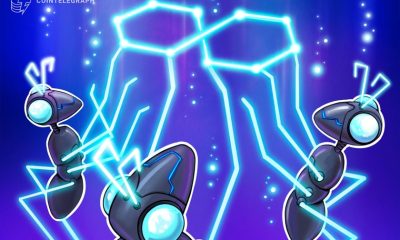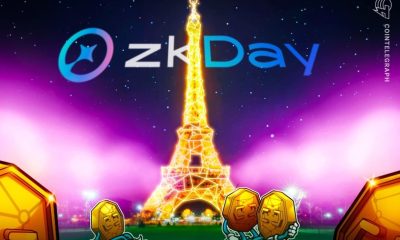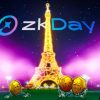ICO
Evolving the DAO: How decentralized companies can dominate Web3

Are decentralized autonomous organizations reaching their full potential? The current focus on governance means that many other opportunities are being missed.
Decentralized autonomous organizations — known as a DAO for short — have become a mainstay of the crypto world.
The rationale behind DAO is to enable companies and organizations to fully function without the need for a hierarchical management structure. As this Cointelegraph guide explained, it’s like a vending machine delivering a snack in exchange for a bundle of coins — and then automatically using those funds to reorder stock. There’s no need for human involvement in keeping the machine running, as all of the processes it needs to function are pre-written into code.
Beyond this real-world example, the possibilities for DAO are endless. There’s just one issue: Some believe that the potential and promise that this technology offers aren’t being fully exploited. Many DApps only use DAO for governance purposes — enabling community members to submit proposals and cast votes.
A growing band of crypto enthusiasts believe that DAO will play a starring role as the world makes the shift to Web3 — paving the way for fully decentralized companies that can secure the same levels of significance and influence that centralized tech giants currently enjoy in the Web2 world. The rise of the value internet will require a new style of organization where decentralized apps are managed by community members.
But if this is going to be achieved, the DAO needs to evolve. Technical limitations need to be addressed and removed to achieve mass adoption.
Beyond voting
MetisDAO believes that decentralized autonomous organizations should provide far more than a voting mechanism for members of the community. Instead, it argues that the DAO should help manage their collaborations — enabling everyone to contribute to a project’s growth and receive incentives based on their hard work.
But at the moment, the structure of the DAO means that it’s ill-suited to large-scale applications. There’s a heavy reliance on smart contracts, and the programming language isn’t always ideal for executing complex business logic. The focus on voting is also impractical for a big, decentralized company, and can distract from the bigger picture. Major businesses don’t have board meetings every day to vote on operational matters — instead, they have a framework to ensure that daily operations are under control. DAO needs the same.
From a technical perspective, change is also required. Layer 1 solutions are marred by high gas costs, low levels of efficiency, and a lack of on-chain tools that can support the management of a DAO. Evolution is also needed to ensure that members of a community can trust each other easily.
Making decentralized companies happen
MetisDAO features a core mechanism for building trust and holding people accountable. Known as Optimistic Governance, this approach aims to unite community members through the use of staking bonds, which ensures that participants are financially committed and motivated to work in the best interests of a project. Collaborators who fail to fulfill promises could end up being penalized through a suite of pullback mechanisms.
Decentralized companies can be established in three simple steps — and the embedded trust mechanism means that they can collaborate with anyone. Over time, users can accumulate Reputation Power, a decentralized business credentials system that’s based on collaboration history recorded on the blockchain. This means every wallet address can be evaluated so users can ascertain whether they are trustworthy or not.
Metis is also a Layer 2 solution (by hard-forking Optimistic Rollup) that serves as a sidechain on top of the Ethereum mainchain. This paves the way for greatly increased scalability and dramatically lower gas costs. Most transactions end up happening in this sidechain, and are rolled up into one package when communication needs to be made with the mainchain. Better still, a plethora of microservices and tools can be developed and deployed through this infrastructure.
The project also offers more functions for DAO management — and already, community members have developed task management, knowledge management and event management. This is coupled with a simple interface that Web2 users will find easy to understand, and straightforward APIs that pave the way for integration with other DApps.
In time, Metis is hoping to ensure that the DAO can serve as more than a shell structure that doesn’t encourage value creation. Reform is needed for effective governance. Many projects are home to token holders who are determined to pursue arbitrage opportunities — people who have little to no intent of voting because they don’t care about what’s going on in the community.
Metis just finished its seed round fundraising and is set to officially launch in April — and private fundraising is scheduled to conclude in the same month. This will pave the way for integration with Web2, DeFi and NFT communities. Integrating with DeFi protocols will enable community members to operate and manage their funds collectively and avoid being exploited by whales. Metis tokens are going to be listed on exchanges before June, and a range of additional microservice tools will launch. And before the summer, decentralized companies will be able to launch their very own tokens.
Disclaimer. Cointelegraph does not endorse any content or product on this page. While we aim at providing you all important information that we could obtain, readers should do their own research before taking any actions related to the company and carry full responsibility for their decisions, nor this article can be considered as an investment advice.


















